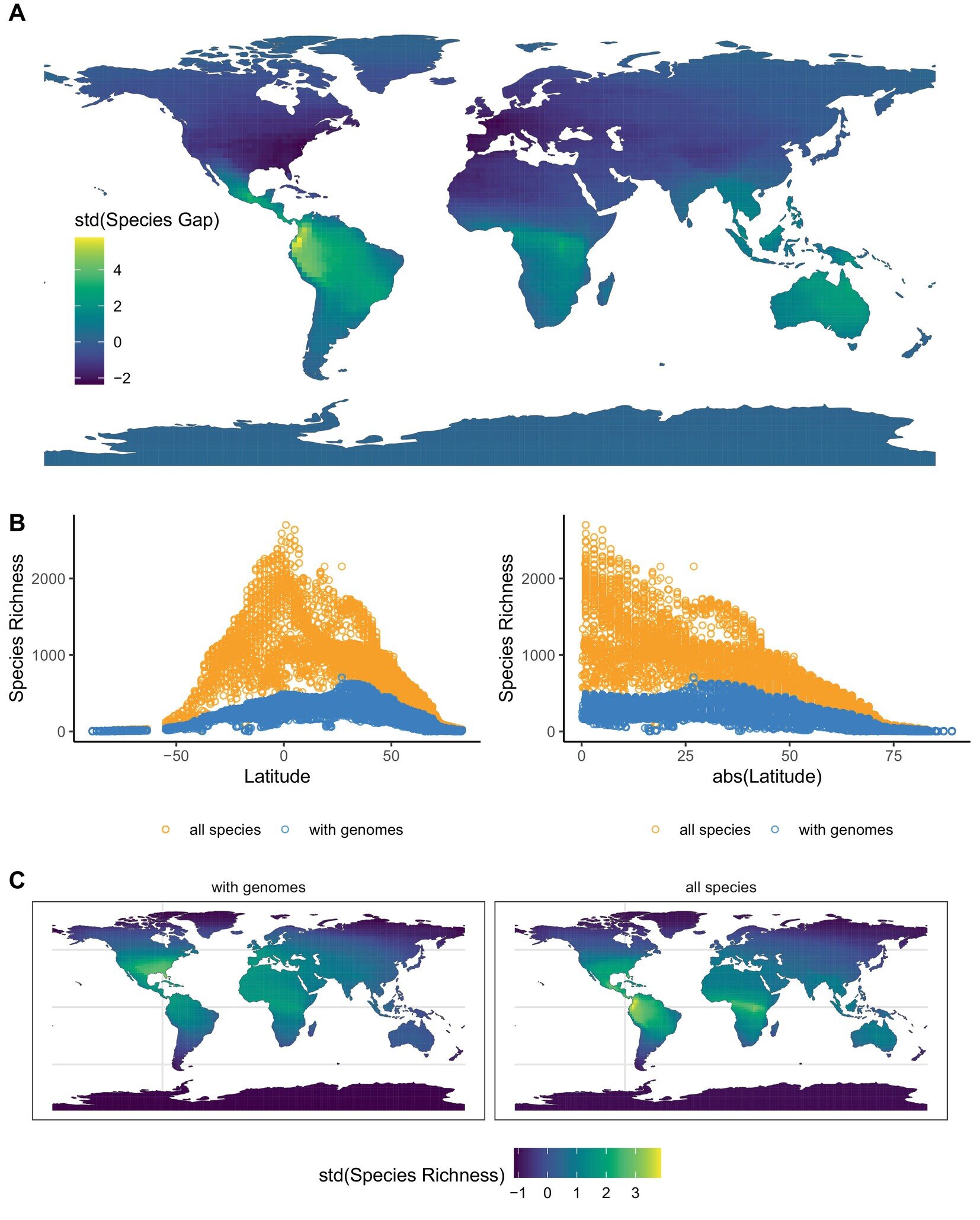Montana State University and Universidad de los Andes researchers have detected a significant imbalance in the distribution of tetrapod reference genomes. They find a disproportionate concentration of studies in high-latitude regions compared to where global biodiversity is most concentrated.
According to the study, the current imbalance in global genomic knowledge in ecology and evolutionary biology could profoundly impact future conservation efforts. This imbalance is particularly concerning given that the majority of biological diversity is found in lower-latitude tropical areas.
Whole-genome sequencing (WGS) is used for understanding genetic diversity, identifying adaptive traits, inferring evolutionary relatedness, and detecting genes with specific functions or adaptations. These identifiable aspects of a whole genome are assembled patchworks of millions of research projects identifying individual gene functions within and across lifeforms.
In conservation genetics, WGS offers critical insights into the genetic health of populations. By revealing patterns of genetic variation and inbreeding, these insights inform management decisions to aid in preserving endangered species.
In a paper, “A Latitudinal Gradient of Reference Genomes,” published in the journal Molecular Ecology, the researchers reveal that reference genomes and identification of global tetrapod biodiversity are heavily skewed towards species in the Global North and midlatitudes.
A Web of Science literature search for conservation genetics research revealed that 87% of studies had authors from the Global North. WGS usage in conservation genetics research within the Global South accounted for only 1–2% of relevant studies.
Two datasets, the Global Biodiversity Information Facility (GBIF) and the US National Institutes of Health’s National Center for Biotechnology Information (NCBI) Genome Browser, were compared to look for species sequencing focus.
NCBI is a free genomic research database that contains the world’s most comprehensive collection of sequenced genomes.
GBIF is a free online catalog with data on millions of species aimed at providing anyone, anywhere, open access to data about all types of life on Earth. By narrowing a GBIF search to preserved specimens from natural history museum collections and selecting only the specimens with geolocation coordinates, they created a pool of 30,832 tetrapods.
Comparing this tetrapod pool to reference genomes available through the NCBI, only 2,099 species (6.8%) have assembled reference genomes. Most of the 2,099 sequenced species originate from the Global North and mid-latitude regions, while tropical areas and the Global South are starkly underrepresented. Even within the already limited 6.8% of species data, only a tiny fraction comes from regions with the highest biodiversity.
Accurately cataloging global biodiversity by location with WGS is critical in ensuring conservation efforts are based on accurate data. With more sequencing data, ecology, evolution and conservation scientists can better preserve the planet’s rich diversity and protect endangered species for future generations.
There is also a hidden function of sequencing data that the authors mention. High-impact scientific journals increasingly have editorial guidelines that expect sequencing data, even if it is not essential to all research questions.
If the high-throughput sequencing infrastructure is out of reach for the scientists residing where most of the world’s species live, we might not just be missing some data—we could be missing all of it.
More information:
Ethan B. Linck et al, A Latitudinal Gradient of Reference Genomes, Molecular Ecology (2024). DOI: 10.1111/mec.17551
© 2024 Science X Network
Citation:
A global imbalance in reference genomes: Research highlights need for sequencing resources in biodiversity-rich areas (2024, October 29)
retrieved 29 October 2024
from EpM
This document is subject to copyright. Apart from any fair dealing for the purpose of private study or research, no
part may be reproduced without the written permission. The content is provided for information purposes only.
